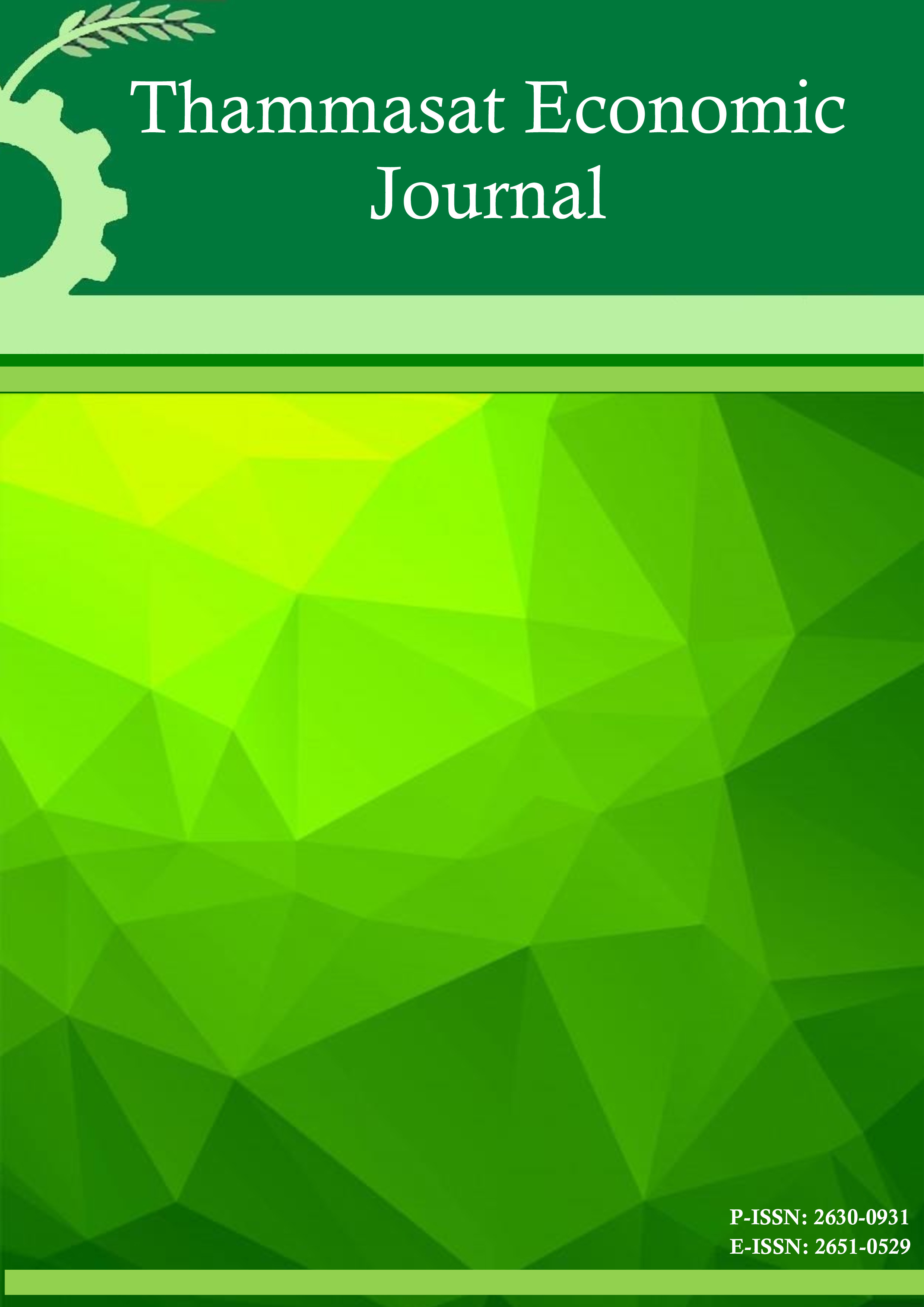Remanufacturing
Abstract
บทความนี้มีวัตถุประสงค์เพื่อนำเสนอกรอบแนวคิดเกี่ยวกับ Remanufacturing และนัยยะเชิงนโยบาย โดยนัยยะต่อการพัฒนาเศรษฐกิจจะให้ความสำคัญในบริบทของประเทศกำลังพัฒนาที่กำลังเผชิญความท้าทายทั้งเรื่องปัญหาสิ่งแวดล้อมที่ต้องการความร่วมมือระดับนานาชาติเพื่อแก้ปัญหาร่วมกัน ปัญหาปัจจัยเชิงสถาบันที่อ่อนแอและปัญหาการบังคับใช้กฎระเบียบอย่างมีประสิทธิผล และความท้าทายในการพัฒนาเศรษฐกิจในระยะปานกลางกับการหลีกหนีการติดกับดักการพัฒนา (Middle Income Trap) บทความนี้ประกอบไปด้วย 4 ส่วนที่สำคัญ ส่วนแรกนำเสนอคำจำกัดความและประเภทของ Remanufacturing (ส่วนที่ 1) ถัดมาอธิบายถึงความเหมือน-ความต่างระหว่าง Remanufacturing กับ Recycle (ส่วนที่ 2) ส่วนที่ 3 นำเสนอปัจจัยในการกำหนดความเป็นไปได้ของการผลิตและจำหน่ายสินค้า Remanufacturing และส่วนสุดท้ายจะเป็นบทสรุปและนำเสนอนัยเชิงนโยบายในเรื่อง Remanufacturing
References
2.Economist (2009a), A special report on waste: Talking rubbish. 26 February.
3.Economist (2009b) A special report on waste: Round and round it goes Recycling is good for the environment, but it costs. Is it worth it?, 26 February.
4.Ferguson, M.E. and G.C. Souza (2010), Closed-Loop Supply Chains: New Developments to Improve the Sustainability of Business Practices, Boca Ratton FL. CRC Press.
5.Fishman, A., N. Gandal, and O. Shy (1993), ‘Planned Obsolescence as an Engine of Technological Progress’, Journal of Industrial Economics, XLI (4): 361-370.
6.Herold, M. (2004), Managing End-of-use Products, Thesis submitted to Department of Industrial Engineering and Management, Helsinki University of Technology.
7.King, A., W.L. Ijomah, C. McMahon (2005),’"Reducing waste: repair, recondition, remanufacture or recycle?’, Sustainable Development Journal,14(4): 257-267.
8.Lund, R.T. (1985), ‘Remanufacturing: The Experience of the United States and Implications for Developing Countries’, World Bank UNDP Project Management Report No.2, Washington.
9.The Basel Action Network and Silicon Valley Toxics Coalition, 2002 Export Harm: The High Tech Trashing of Asia, February, Download จาก at https://www.ban.org/E-waste/technotrashfinalcomp.pdf)
10.USITC (2012), ‘Remanufactured Goods: An Overview of the US and Global Industries, Markets, and Trade’ United States International Trade Commission, Publication No 4356, October Download จาก https://www.usitc.gov/publications/332/pub4356.pdf วันที่ 31 มกราคม 2556










